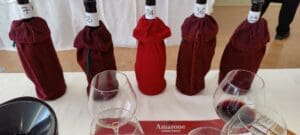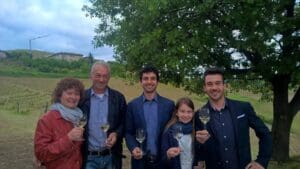Early last year, words on the new Chianti Classico quality tier, Gran Selezione, made its way around. Very quickly, it became popular conversation topic among local trade people, with speculation about its impact and possible line of new products that may refresh the image of Chianti. A name that is as traditional as the aristocratic past of Florence. Things were finally properly ironed out this year.
For few weeks I was tied down with work related to The Business Times Wine Challenge 2014, and equally so even when I was in Shanghai. As the gatekeeper for vetting and accepting entries, it was my responsibility to make sure the wines entered were of the right vintages and categories. Though not specifically mentioned, we kept a look out for the Chianti Classico Gran Selezione category.
We were a bit fidgety about it, and fortunately none showed up.
The Gran Selezione, or grand selection, is a new recognition for Chianti Classico wines that are made using grapes harvested from a single estate with extended ageing up to 30 months, six months longer than one tier below. While this seems like a great move to draw distinctions, some winemakers admitted they simply aged their existing 2010 Riserva stock six months longer before release so they can enjoy this new title.
A confession that could leave a blemish on the new title before it even took off.
Four months ago at Vinitaly, the Chianti consortium booth was packed and crawling with people making appointment to taste new Chianti vintage and arranging trade meetings. Fortunately with prior arrangement made by fellow wine journalist, Miyoung, I had the opportunity to taste close to a dozen of Chianti Classico Gran Selezione without any fuss.
From a drinker’s perspective, it was easy to accept and identify with the new layer of complexity and sophistication offered by well made Chianti Classico Gran Selezione. In summary, layers of complex aromas like sweet earth, oak perfume notes built over the tomato and cherry essence of Sangiovese were delightful from those made by Barone Ricasoli, Vigna del Capannino, Tenute di Castelvecchi and Castello di Gabbiano. In a nut shell, it was difficult to not like the Gran Selezione. But like all wines, there were exceptions that can be ignored.
Continuing the blending requirements from Chianti Classico, the Gran Selezione also calls for 80 per cent of the blend to come from Sangiovese. But in practise, several houses have already chose to make their Chianti with 100 per cent Sangiovese, and if they adopt the 30 months ageing regimen, the wine will be on the brink of becoming a Brunello.
Brunello or Brunello di Montalcino, a 100 per cent Sangiovese wine that needs 36 months ageing before release is often described as the pinnacle of Tuscan wines. The Chianti Consortium wants to bring Chianti Classico on par with Brunello di Montalcino, while others like myself feel it was simply marketing and branding motivated. Surely, it will take another few years to tell.
What will the name Chianti mean in the future?



